Table of content
Fried noodles, a dish celebrated across continents for its versatility and bold flavors, is a culinary masterpiece that bridges cultures and cuisines. Whether you know it as chow mein, char kway teow, or simply stir-fried noodles, this dish offers endless opportunities for creativity. In this comprehensive guide, we’ll explore the intricacies of crafting restaurant-quality fried noodles at home, from selecting the right ingredients to mastering the stovetop technique. By the end of this article, you’ll be equipped to whip up a plate of sizzling, aromatic noodles that rival any takeout joint.
The Foundation: Understanding Fried Noodles
Fried noodles are a cornerstone of Asian cuisine, with variations found in China, Japan, Thailand, Malaysia, and beyond. At its core, the dish involves cooking noodles—wheat-based, rice-based, or egg-based—in a hot wok or skillet with an array of vegetables, proteins, and sauces. The result is a harmonious blend of textures and flavors: tender noodles, crisp-tender vegetables, and savory, umami-rich seasonings.
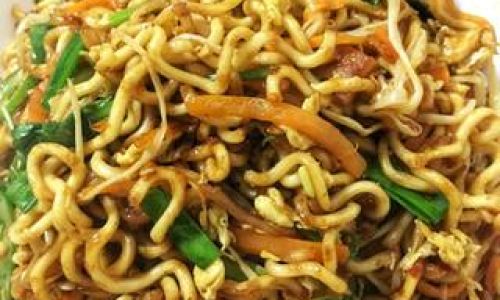
What sets fried noodles apart is the cooking method: high heat, quick stirring, and precise timing. These elements ensure the noodles develop a slight caramelization (known as wok hei in Cantonese cooking) without becoming soggy. Achieving this balance requires practice, but with the right guidance, anyone can master it.
Ingredients: Building Blocks of Flavor
The beauty of fried noodles lies in their adaptability. You can customize the recipe based on dietary preferences, pantry staples, or seasonal produce. Below is a breakdown of essential and optional ingredients:
Noodles
- Egg Noodles: Fresh or dried, these are classic for dishes like chow mein. Fresh noodles cook faster and have a springier texture.
- Rice Noodles: Thin (rice sticks) or wide (ho fun), these are gluten-free and work well in Thai or Vietnamese-inspired recipes.
- Udon Noodles: Thick, chewy wheat noodles popular in Japanese stir-fries.
- Instant Ramen Noodles: A budget-friendly option; discard the seasoning packet and use your own sauces.
Pro Tip: Cook noodles al dente according to package instructions. Rinse under cold water to stop cooking, then toss with oil to prevent sticking.
Proteins
- Chicken: Thigh meat stays juicier; slice against the grain.
- Shrimp: Peel and devein; pat dry to prevent steaming.
- Tofu: Extra-firm, pressed to remove moisture; pan-fry for texture.
- Beef: Flank or sirloin, thinly sliced; marinate in soy sauce and cornstarch for tenderness.
- Eggs: Scrambled and added at the end for a protein boost.
Vegetables
- Crisp-Tender Options: Bell peppers, snap peas, carrots, broccoli.
- Aromatics: Garlic, ginger, shallots, or scallions.
- Leafy Greens: Bok choy, spinach, or cabbage.
- Mushrooms: Shiitake or button mushrooms add earthiness.
Pro Tip: Cut vegetables uniformly for even cooking.
Sauces and Seasonings
- Soy Sauce: Use light soy for saltiness, dark soy for color.
- Oyster Sauce: A thick, sweet-savory staple (use vegan oyster sauce for plant-based versions).
- Sesame Oil: Toasted for nutty aroma; add a drizzle at the end.
- Rice Vinegar: Balances richness with acidity.
- Chili Paste or Sriracha: For heat (optional).
- Sugar or Honey: A pinch to round out flavors.
Oils
- Neutral Oil: Peanut, vegetable, or canola oil for high-heat cooking.
- Sesame Oil: For finishing (see above).
Step-by-Step Cooking Guide
Prep Work: The Key to Efficiency
Fried noodles cook quickly, so mise en place is crucial.
- Chop Vegetables: Julienne carrots, slice bell peppers, and shred cabbage.
- Marinate Protein: Toss meat or tofu in a mix of soy sauce, cornstarch, and pepper.
- Mix Sauces: Combine soy sauce, oyster sauce, vinegar, sugar, and a splash of water in a bowl.
- Prep Aromatics: Mince garlic and ginger; chop scallions.
Cooking the Noodles
- Boil: Cook noodles in salted water until al dente. Drain and rinse under cold water.
- Dry: Toss with a teaspoon of oil to prevent clumping.
Stir-Frying Technique
Step 1: Heat the Wok
- Place a wok or large skillet over high heat. Add 2 tablespoons of oil and swirl to coat.
- Pro Tip: A well-seasoned carbon-steel wok retains heat best, but a stainless-steel or nonstick pan works too.
Step 2: Cook Aromatics
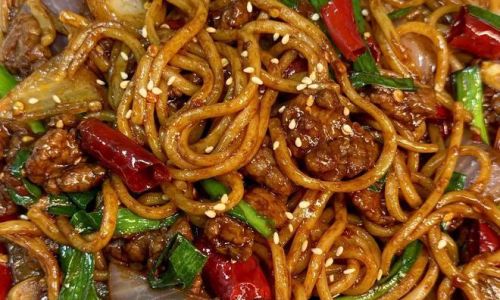
- Add garlic and ginger. Stir-fry for 10–15 seconds until fragrant (don’t burn!).
Step 3: Sear Protein
- Add marinated protein in a single layer. Let it sear undisturbed for 1–2 minutes to develop caramelization. Toss until cooked through, then transfer to a plate.
Step 4: Stir-Fry Vegetables
- Add heartier veggies (carrots, broccoli) first. Stir-fry for 2–3 minutes, then add quicker-cooking ones (bell peppers, snap peas). Toss in leafy greens last.
Step 5: Combine Noodles and Sauce
- Push veggies to the side. Add noodles and pour the sauce mixture over them. Toss gently to coat.
- Pro Tip: Use tongs to lift and separate noodles, ensuring even sauce distribution.
Step 6: Reintroduce Protein
- Add cooked protein back to the wok. Toss everything together.
Step 7: Finish with Aromatics and Oil
- Drizzle sesame oil, toss in scallions, and remove from heat.
Variations and Customizations
Fried noodles are a blank canvas. Here’s how to adapt the recipe:
Spicy Szechuan-Style
- Add dried chili flakes, Szechuan peppercorns, and a splash of black vinegar.
- Top with crushed peanuts and cilantro.
Thai Drunken Noodles (Pad Kee Mao)
- Use wide rice noodles.
- Add Thai basil, fish sauce, and lime juice.
- Include chili paste and a splash of beer (or broth).
Vegetarian Delight
- Swap protein for crispy tofu or edamame.
- Load up on mushrooms, baby corn, and water chestnuts.
Yakisoba (Japanese Stir-Fry)
- Use yakisoba noodles (pre-cooked and vacuum-sealed).
- Add Worcestershire sauce, benishoga (pickled ginger), and aonori (seaweed flakes).
Common Mistakes and How to Avoid Them
-
Soggy Noodles: Overcooking during boiling or stir-frying.
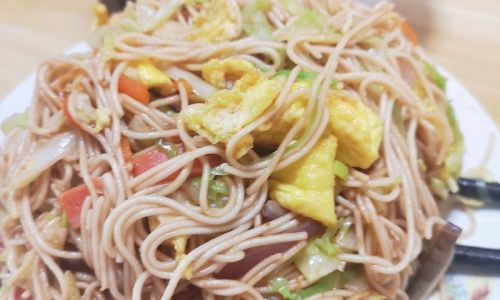
- Fix: Cook noodles al dente and stir-fry over high heat to evaporate excess moisture.
-
Clumpy Noodles: Insufficient oil or overcrowding the pan.
- Fix: Toss noodles with oil post-boiling and cook in batches if needed.
-
Bland Flavor: Under-seasoning or uneven sauce distribution.
- Fix: Taste and adjust seasoning before serving. Ensure noodles are evenly coated.
-
Burnt Aromatics: Overcooking garlic or ginger.
- Fix: Add aromatics to cold oil and stir immediately over high heat.
Presentation and Serving Suggestions
- Garnish: Sprinkle with toasted sesame seeds, chopped cilantro, or lime wedges.
- Pairings: Serve with a side of pickled vegetables, kimchi, or a crisp cucumber salad.
- Drinks: Pair with jasmine tea, light beer, or a citrusy soda.
The Science Behind Perfect Fried Noodles
Understanding the chemistry of cooking elevates your dish:
- Maillard Reaction: High heat caramelizes sugars in the noodles and proteins, creating depth of flavor.
- Emulsification: Starch from the noodles thickens the sauce, creating a glossy coating.
- Umami: Soy sauce and oyster sauce amplify savory notes through glutamate-rich ingredients.
Healthier Twists
- Lower Sodium: Use reduced-sodium soy sauce and limit added salt.
- More Veggies: Boost fiber and nutrients with extra vegetables.
- Lean Proteins: Opt for chicken breast or shrimp instead of fatty meats.
Troubleshooting Guide
| Issue | Solution |
|---|---|
| Noodles stick to the pan | Use more oil; ensure the pan is screaming hot. |
| Sauce is too thick | Add a splash of broth or water. |
| Vegetables are undercooked | Stir-fry in stages; add tender veggies later. |
| Overly greasy | Drain excess oil on paper towels. |
Cultural Significance of Fried Noodles
Fried noodles transcend mere sustenance; they’re symbols of celebration and togetherness. In China, long noodles represent longevity, often served during birthdays. In Malaysia, char kway teow is a beloved street food, while in Japan, yakisoba is a staple at festivals. By making this dish at home, you’re not just cooking—you’re honoring a global culinary tradition.
Conclusion
Mastering fried noodles is a journey of experimentation and intuition. Start with the basics, then riff on the recipe to suit your tastes. Whether you prefer the smokiness of wok-charred noodles or the freshness of herbs in a Thai-inspired version, this dish invites creativity. So grab your wok, crank up the stove, and let the sizzle begin. Your path to fried noodle perfection starts here—one stir-fry at a time.
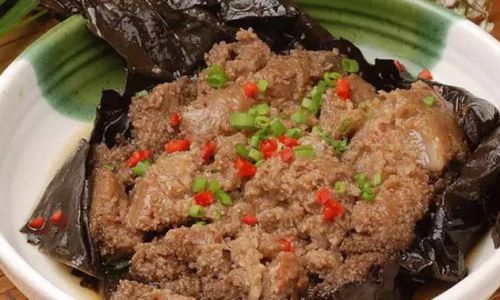
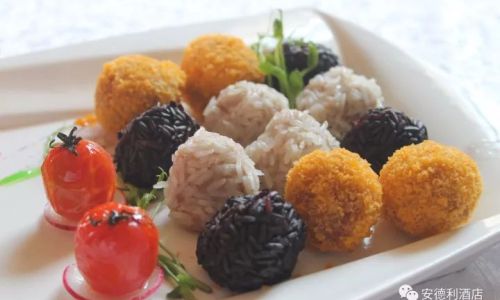
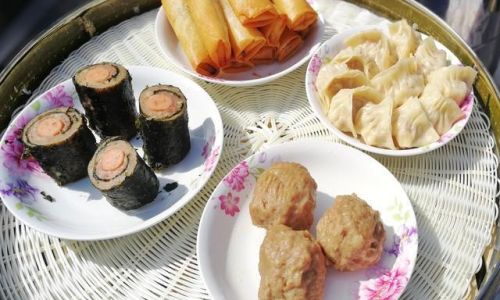
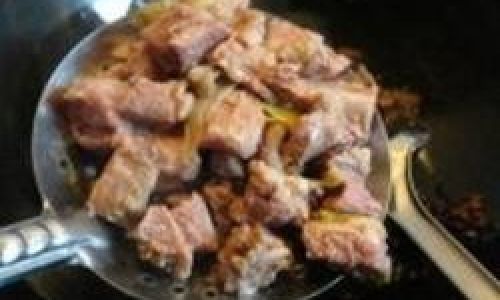
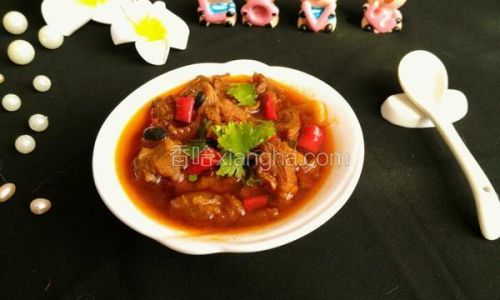
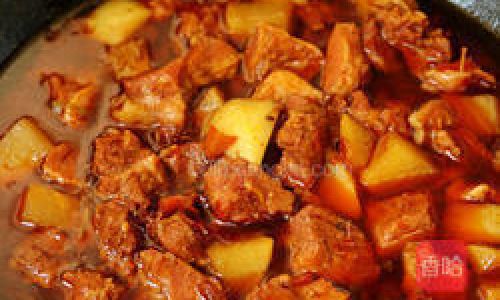
0 comments